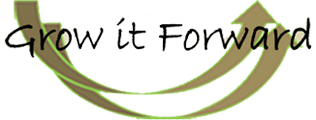Death of a Client
It was Friday morning at 10 and he didn’t show up for our appointment. This is not unusual in general, but it was unusual for him. I worked with this man, I will call him John, which is not his real name, for 15 years and he was very diligent about letting me know if he wasn’t able to make it in. I tried to call him after about 10 minutes and left him a voicemail. I didn’t hear from him so later that day I sent a follow-up email. I still hadn’t heard anything when I came in on Monday, so I tried to call him again and left another message. Later that evening I received an email from his brother informing me that John had died a few days ago but offered no details on the cause of death.
This was the first time I experienced the death of a client in my 21 years in private practice. It seems inevitable in a way, but it still felt like a shock. John was 69 and had chronic depression and he seemed to need and enjoy our times together over the years. He had a variety of complaints about the aches and pains of growing older, but he stayed physically active and had no serious health problems that I was aware of. A reminder that death comes in its own time and in the end, we are not in control.
As I took it all in, I felt surprised and sad. We were not friends, and our relationship was confined to one hour, once or twice a month. Nonetheless, we had a warm and friendly relationship that developed over the years as I sat with him and processed a range of issues and emotions. As a therapist, I never really know what the relationship means to my clients, but it seems it was significant to him too. As I met with other clients throughout that week, some of whom were also long-term clients, John was in the back of my mind. I found myself being more intentional than ever to be present, value each person, and try to make each session meaningful and impactful.
Death is something most of us don’t like to think about or talk about until it touches us in some way. In those moments we remember that it is something we all have in common, no matter our lot in life. In the past year I noticed that John had been paying more attention to his spirituality and talked more about religion and faith. This is something I have observed in other people too as they have gotten closer to the end of life. Death humbles all of us and can be a great reminder of what really matters and sharpen our focus on how we want to live and who we want to be. From time to time over the years John and I joked about the movie Grumpy Old Men, and the scene where Jack Lemmon is telling Walter Matthau about a friend who died suddenly from a heart attack and Walter responded, “lucky bastard”! It is my hope that in the end, John felt he was one of the lucky ones. I miss you John and I am grateful for our time together.






